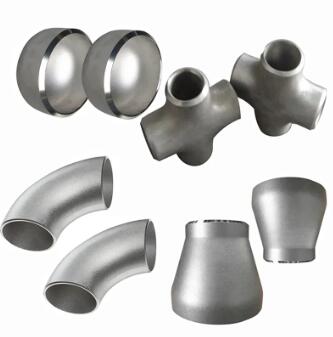Unveiling the Manufacturing Process of Stainless Steel Tee Pipe Fittings
2024-01-06
Introduction:
Stainless steel tee pipe fittings are essential components in various industries, providing strength, corrosion resistance, and longevity to piping systems. Ever wondered about the intricate process that goes into manufacturing these critical components? In this blog post, we'll delve into the manufacturing process of stainless steel tee pipe fittings, shedding light on the steps involved in creating these versatile and durable components.
1. Material Selection:
The journey begins with the careful selection of raw materials. Stainless steel, known for its corrosion resistance and strength, is the primary material for tee pipe fittings. Manufacturers choose specific grades of stainless steel depending on the application and the environmental conditions the fittings will face.
2. Cutting and Shaping:
Once the stainless steel is procured, it undergoes cutting and shaping processes. Automated machinery or specialized cutting tools are used to shape the raw material into the required form for tee fittings. Precision is crucial in this stage to ensure uniformity and accuracy in the final product.
3. Forming the Tee Shape:
The next step involves forming the distinctive "T" shape that characterizes tee pipe fittings. This can be achieved through various techniques, including hot forming or cold forming processes. Hot forming involves heating the stainless steel to high temperatures and then shaping it, while cold forming is done at lower temperatures. The choice depends on factors such as material properties and the desired final characteristics of the tee fitting.
4. Welding or Joining:
Joining the tee's branches to its main body is a critical step. Welding is a commonly used method in this stage. Skilled welders use precise techniques to ensure a strong and secure bond between the components. The welding process is carefully controlled to avoid defects and ensure the structural integrity of the tee fitting.
5. Heat Treatment:
To enhance the mechanical properties and remove any residual stresses from the forming and welding processes, stainless steel tee pipe fittings may undergo heat treatment. This step contributes to the fittings' strength, hardness, and resistance to corrosion.
6. Surface Finish:
The aesthetic and corrosion-resistant properties of stainless steel tee fittings are further enhanced through surface finishing processes. Techniques like pickling, passivation, or polishing are employed to remove any oxides, scales, or impurities, leaving a clean and smooth surface.
7. Quality Control:
Stringent quality control measures are implemented throughout the manufacturing process. Inspections, dimensional checks, and non-destructive testing ensure that each stainless steel tee pipe fitting meets the required specifications and standards. This step is crucial to guarantee the reliability and safety of the final product.
8. Packaging and Shipping:
Once the tee fittings pass quality control, they undergo packaging for protection during transportation. Manufacturers take care to package the fittings securely to prevent any damage during shipping, ensuring that they reach their destination in optimal condition.
Conclusion:
The manufacturing process of stainless steel tee pipe fittings is a precise and intricate journey that involves careful material selection, shaping, welding, heat treatment, and quality control. This process ensures that the final product meets the stringent requirements of various industries, providing reliable and durable components for piping systems worldwide. As technology and manufacturing techniques continue to advance, the production of stainless steel tee pipe fittings will likely become even more efficient and sophisticated, meeting the evolving needs of diverse industrial applications.



